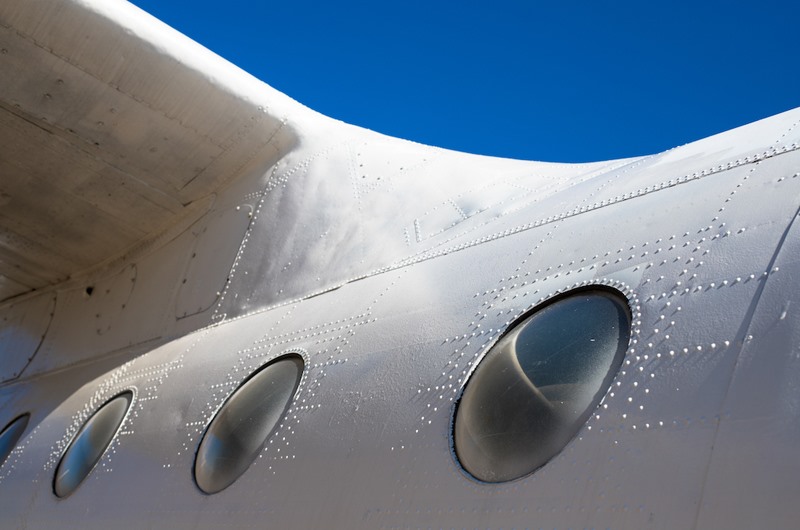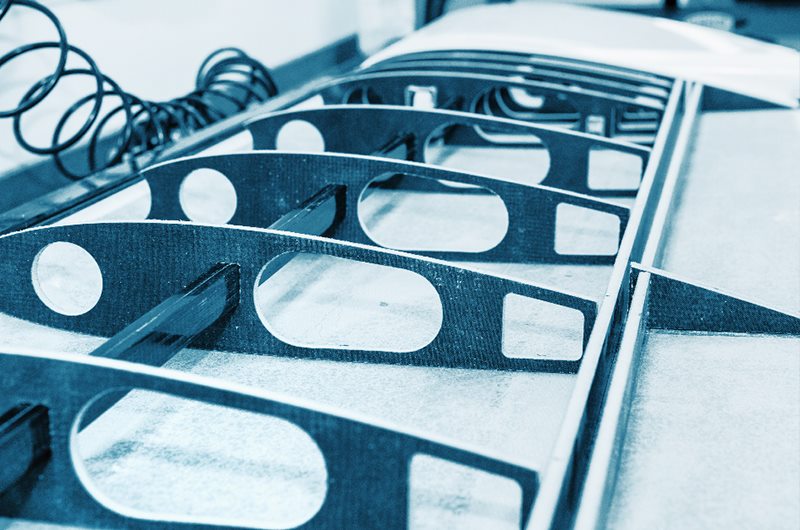(1) strength and rigidity
At present, the main measures taken by material workers are to increase the content of alloying elements. However, increasing the content of alloying elements will bring a series of difficulties to the melting, casting, processing and forming of the alloy, and may have adverse effects on the corrosion resistance, fracture toughness and fatigue performance of the alloy. Microalloying of alloys is considered to be one of the most desirable effective measures, for example, adding Zr and / or SC with a mass fraction of less than 0.5% to Al Mg and Al Zn mg Cu alloys, and adding Zr, SC, Zn, Ag, etc. to Al Li alloys. Heat treatment is mainly to carry out multi-stage, step-by-step solid solution and aging treatment to improve the strength performance of the alloy on the premise of meeting the requirements of corrosion resistance.

The new manufacturing technology -- spray deposition technology and powder metallurgy method are adopted to prepare alloy ingots. The latter process can obtain alloys with high strength, but the cost is high and it is difficult to prepare large components; The spray deposition method is considered to be a better technology for developing the next generation of high-strength aluminum alloy, which can produce large ingots with relatively low preparation cost and can make 7 × × × The w (Zn + Mg) content of the alloy exceeds the limit of 14% to improve the strength. At present,
7075 aviation aluminum alloy with tensile strength over 700 n / mm2 can be stably produced. Some research institutes in China have made this material and obtained many patents.
(2) heat resistance
With the increase of flight speed, the problem of aerodynamic heating and overload of the aircraft will become prominent. The stagnation point temperature of F / A-22 in m2.0 flight will reach 121 ℃. When the aircraft swoops and maneuvers, it can reach M2.5. At that time, the stagnation point temperature can exceed 150 ℃, which is the limit temperature that the aluminum alloy skin can withstand. When reaching this temperature, the potential safety hazard is prominent. Therefore, it is necessary to improve the heat resistance of the aluminum alloy. At present, the research work in this area mainly focuses on: 2 × × × A small amount of Fe and Ni are added to the alloy, such as the recently developed 2650 aluminum alloy, which is a heat-resistant alloy and can be used to manufacture the skin of supersonic aircraft.
To Tradition 2 ××× A small amount of special alloying elements such as Ag are added to the alloy. C415 aluminum alloy in the United States is developed by Alcoa. Great progress has been made in the preparation of heat-resistant alloys by powder metallurgy and spray deposition, which may become the main process for the preparation of high-temperature aluminum alloys in the future. 8019 aluminum alloy successfully prepared by these processes in the United States was registered in 1990. It is a high-temperature aluminum alloy with w (FE) = 7.3% ~ 9.3%; A heat-resistant aluminum alloy of grade 8009 was also made. China has also developed spray deposited aluminum alloys that can be used at 350 ℃.
(3) reliability and long-term service
In order to ensure high reliability and long service life of the aircraft, the materials are required to have high fracture toughness, fatigue strength and corrosion resistance. The main measures taken are to improve the purity of the alloy, that is, to reduce the content of inherent impurities Fe and Si in the aluminum. Now almost all Aerospace aluminum alloys have corresponding high-purity alloys.
Strictly control the alloy composition and reduce the number of refractory phase and excess phase. For example, the composition range of 2524 aluminum alloy is much narrower than that of 2024 aluminum alloy, and their strength levels are the same, but the fracture toughness and fatigue performance of the former are much higher than that of the latter.
Changing the parameters of the current heat treatment system and developing new heat treatment processes have become one of the research focuses, for example, to improve the heat treatment efficiency of 7 × × × The corrosion resistance and fracture toughness of aluminum alloy have developed T73, T74 and T76 States and the recently developed three-stage aging T77 state. These materials can meet the requirements of the latest military and civil aircraft design in strength, fracture toughness, corrosion resistance and fatigue performance.

The measures taken to improve the corrosion resistance of aluminum alloy include: in addition to the traditional 2 ××× 、 seven × × × In addition to aluminum coating on aluminum alloy sheet, 6013 and 6056 aluminum alloys with high corrosion resistance have been successfully developed abroad, and 7a33 alloy has been successfully developed in China; Except for pair 7 ××× In addition to the over aging treatment of aluminum alloys, the over aging treatment of 6013, 6056 and other aluminum alloys, such as T78 heat treatment technology, and some 2 × × × The aging system and characteristics of ak4-1 aluminum alloy, such as T2 treatment of ak4-1 aluminum alloy in Russia. It seems that multi-stage aging is an effective measure to improve the corrosion resistance, strength, toughness, fatigue performance and other comprehensive properties of aluminum alloy. In addition to the above methods, anodizing, painting, powder spraying, film coating and other technologies can also be used for surface protection to improve the corrosion resistance of aluminum alloy.
(4) weight loss
Aviation grade aluminum alloy has two meanings for aircraft weight reduction: one is to reduce the absolute mass of aluminum alloy itself; The other is to improve the specific strength of aluminum alloy. Common weight reduction measures: improve the specific strength of alloys, develop high-strength alloys, such as 7050 aviation aluminum alloy of the United States, B96 aluminum alloy of the Soviet Union, and some high-component aluminum alloys produced by spray deposition. Al Li alloy has been developed and a series of 2 × × × Tied, 5 ××× Tied, 8 × × × And has been applied in aerospace manufacturing. The structural part of China Tiangong-1 resource module is replaced by Al Li alloy material, which successfully reduces the weight of the module by more than 10%; Straight section parts such as the fuselage of C919 large passenger plane are made of Al Li alloy. Although the strength of 1420 series Al Li alloy developed by the Soviet Union is not high, its density is low, and it is widely used in the manufacture of bearing parts and non bearing parts. Low density Al Li alloys such as al905xl can be prepared by powder metallurgy. The development trend of Al Li alloy in the future is to improve its specific strength, reduce the production cost and strengthen the recovery and utilization of waste.
Honeycomb aluminum plate and
foam aluminum plate. Honeycomb aluminum structure has been successfully applied in aircraft manufacturing. It is made of aluminum foil with high production cost. At present, the research work of replacing honeycomb structure with foam aluminum is being developed.






